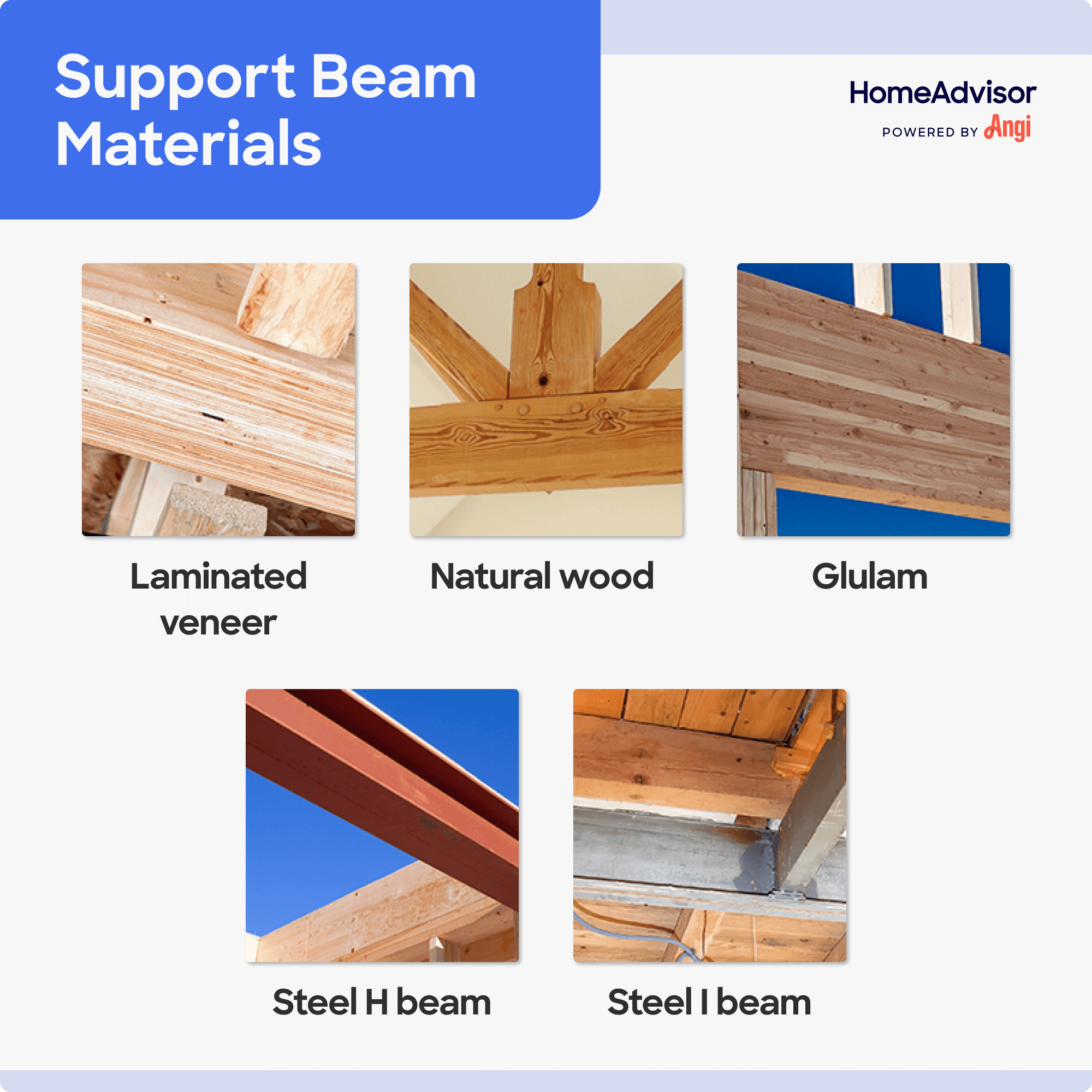How Much Does Steel Beam Installation Cost in 2025?
Installing a steel beam costs an average of $3,374


On average, beam installation costs between $1,244 and $5,505, with an average total of $3,374.
Most of what you pay goes toward the beam itself and the pro who sets it in place, guaranteeing a safe, long-lasting structure.
Steel beams cost $6 to $20 per linear foot and can last 200 years or more, far outliving wood and other alternatives.
Labor costs for beam installation range from $650 to $2,300.
Because steel won’t rot or warp, you’ll spend less on repairs over the years.
This article was updated using automation technology and thoroughly reviewed for accuracy by HomeAdvisor Editor Ryan Noonan.
Average steel beam installation costs range from $1,244 to $5,505, with most projects averaging $3,374. That works out to a range of $6 to $20 per linear foot. Location, beam size, and project complexity all sway the total. Building a realistic budget—and hiring a licensed pro—keeps your home safe, code-compliant, and ready to stand the test of time.
Steel Beam Installation Cost Factors
Several factors drive your total steel beam cost. Keep these in mind when planning your project.

Materials
Expect to pay $6 to $20 for the steel beam itself. Steel’s per-foot price sits in the middle of the pack for structural materials—less than aluminum but often more than LVL. Here’s how the most common options compare.
| Material | Average Cost per Linear Ft. (Materials Only) |
|---|---|
| Steel | $6–$20 |
| Wood | $5–$30 |
| Aluminum | $13–$30 |
| LVL | $3–$12 |
| Glulam | $5–$40 |
Labor
Plan on spending between $650 and $2,300 to hire a general contractor to oversee your new steel beam installation. You’ll likely need to hire a structural engineer as well, costing between $350 and $750.
Replacing a Load-Bearing Wall With a Steel Beam
Taking out a load-bearing wall in a single-story home costs $1,200 to $3,000 before you even add the new beam. Don’t forget to budget for patching and painting the wall and ceiling once the steel is in place.
Types of Steel Beams
Steel beams come in a handful of shapes, all technically I-beams. Each profile is nicknamed for the letter it resembles.
I-Beam
I-beams are the go-to choice for structural support. Two parallel flanges sandwich a vertical web, creating a strong, lightweight shape that’s usually installed horizontally. Variations include H-beams and S-beams, and a standard I-beam can span up to 20 feet.
H-Beam
H-beams—also called W-beams—skip the tapered edges, so the profile looks like a blocky “H.” They’re wider, heavier, and stronger than a comparable I-beam, which lets them span up to 330 feet.
S-Beam
S-beams, or junior beams, use tapered flanges to shed weight without sacrificing much strength. They’re a smart pick for smaller builds where loads are lighter, and you’ll find them in lengths up to 100 feet.
Budgeting for Beam Installation Costs
Consider these cost-saving strategies to make your steel beam installation more wallet-friendly:
Get detailed quotes from at least three local general contractors to ensure competitive pricing.
Tackle simple tasks yourself, like painting walls and ceilings after your beam is in place, to save on labor costs.
Consider bundling other projects with your beam installation to take advantage of having pros on site.
DIY Steel Beam Installation vs. Hiring a Professional
Setting a steel beam isn’t a weekend DIY. A licensed local structural engineer must size the beam and stamp the plans so the job passes inspection. Tackling it yourself can put your home at risk, especially if the work involves removing a wall or other structural changes. Hire a pro to keep the installation safe and code-compliant.
How HomeAdvisor Gets Its Cost Data
No place is more important than your home, which is why HomeAdvisor connects homeowners with local pros to transform their houses into homes they love. To help homeowners prepare for their next project, HomeAdvisor provides readers with accurate cost data and follows strict editorial guidelines. After a project is complete, we survey real customers about the costs to develop the pricing data you see, so you can make the best decisions for you and your home. We pair this data with research from reputable sources, including the U.S. Bureau of Labor Statistics, academic journals, market studies, and interviews with industry experts—all to ensure our prices reflect real-world projects.